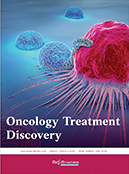Analysis of the Feasibility of Dual-Tracer Sentinel Lymph Node Biopsy After Neoadjuvant Chemotherapy for Breast Cancer
Abstract
Objective: The feasibility and safety of double-tracer sentinel lymph node biopsy (SLNB) for breast cancer patients after neoadjuvant chemotherapy and the possibility of exempting axillary lymph node dissection (ALND). Methods: The clinical data of 116 patients admitted to the Second Department of Breast Surgery of Baotou Cancer Hospital from July 2020 to May 2023 were collected. The patients underwent SLNB after neoadjuvant chemotherapy, and the data of the patients were analyzed. Results: Among the 116 breast cancer patients who underwent SLNB, sentinel lymph node (SLN) was not detected in 1 case, indicating a detection rate of 99.13% (115/116); 35 cases were positive for ALN and 22 cases were positive for SLN, indicating a sensitivity of 62.86 % (22/35); SLNB was successfully performed in 115 cases, indicating an accuracy of 73.91 % (85/115); 7 cases were false negative, and 35 cases were ALN positive, with a false negative rate of 37.14 % (13/35). Conclusion: SLNB cannot wholly replace ALND in breast cancer patients after neoadjuvant chemotherapy. In this experiment, when the number of SLN detected was ≥ 3 or when the breast mass reached pathological complete response, the dual-tracer SLNB could accurately predict the local status of ALN. However, randomized clinical trials with large sample sizes will be needed to consolidate this conclusion.
References
He S, Li H, Cao M, et al., 2023, Age Distribution and Changing Trends of Female Breast Cancer Disease Burden Globally and in Our Country. Chinese Oncology, 32(01): 1–7.
Shao Z, Wu J, Jiang Z, et al., 2022, Chinese Expert Consensus on Neoadjuvant Therapy for Breast Cancer (2022 Edition). Chinese Journal of Cancer, 32(01): 80–89. https://www.doi.org/10.19401/j.cnki.1007-3639.2022 .01.011
Boughey JC, Ballman KV, Hunt KK, et al., 2015, Axillary Ultrasound After Neoadjuvant Chemotherapy and Its Impact on Sentinel Lymph Node Surgery: Results from the American College of Surgeons Oncology Group Z1071 Trial (Alliance). J Clin Oncol, 33(30): 3386–3393. https://www.doi.org/10.1200/JCO.2014.57.8401
Wang Y, Ouyang T, Wang Q, et al., 2009, Latest Data Report on the Multicenter Collaborative Study of Sentinel Lymph Node Biopsy in China CBCSG-001. Chinese Journal of Breast Disease (Electronic Edition), 3(03): 265–272.
Zhang X, Jaffer S, Bleiweiss IJ, et al., 2015, The Clinical Significance of Internal Mammary Lymph Node (IMLN) Biopsy During Autologous Reconstruction in Breast Cancer Patients. Breast Cancer Res Treat, 153(3): 565–572. https://www.doi.org/10.1007/s10549-015-3569-y
Eisenhauer E A, Therasse P, Bogaerts J, et al., 2009, New Response Evaluation Criteria in Solid Tumours: Revised RECIST Guideline (Version 1.1). Eur J Cancer. 45(2): 228–247. https://www.doi.org/10.1016/j.ejca.2008.10.026
Ogston KN, Miller ID, Payne S, et al., 2003, A New Histological Grading System to Assess Response of Breast Cancers to Primary Chemotherapy: Prognostic Significance and Survival. The Breast, 12(5): 320–327.
Krag D, Weaver D, Ashikaga T, et al., 1998, The Sentinel Node in Breast Cancer. A Multicenter Validation Study. New England Journal of Medicine, 339(14): 941–946. https://doi.org/10.1056/NEJM199810013391401
Wang Y, Zuo W, Liu J, et al., 2006, Prospective Non-Randomized Controlled Clinical Study of Sentinel Lymph Node Biopsy Instead of Axillary Dissection in Breast Cancer. Surgery Theory and Practice, 11(3): 104–107.
Veronesi U, Paganelli G, Viale G, et al., 2003, A Randomized Comparison of Sentinel-Node Biopsy with RoutineAxillary Dissection in Breast Cancer. N Engl J Med, 349(6): 546–553.
Mansel RE, Fallowfield L, Kissin M, et al., 2006, Randomized Multicenter Trial of Sentinel Node Biopsy Versus Standard Axillary Treatment in Operable Breast Cancer: The ALMANAC Trial. J Natl Cancer Inst, 98(9): 599–609.
Krag DN, Anderson SJ, Julian TB, et al., 2010, Sentinel-Lymph-Node Resection Compared with Conventional Axillary-Lymph-Node Dissection In Clinically Node-Negative Patients With Breast Cancer: Overall Survival Findings from the NSABP B-32 Randomized Phase 3 Trial. Lancet Oncol, 11(10): 927–933.
Hunt KK, Ballman KV, Mccall LM, et al., 2012, Factors Associated with Local-Regional Recurrence After a Negative Sentinel Node Dissection: Results of the ACOSOG Z0010 trial. Ann Surg, 256(3): 428–436.
Boileau JF, Poirier B, Basik M, et al., 2015, Sentinel Node Biopsy After Neoadjuvant Chemotherapy in BiopsyProvenNodepositive Breast Cancer: The SN FNAC Study. J Clin Oncol, 33(3): 258–264.
Kuehn T, Bauerfeind I, Fehm T, et al., 2013, Sentinel-Lymph Node Biopsy in Patients with Breast Cancer Before and After Neoadjuvant Chemotherapy (SENTINA): A Prospective, Multicentre Cohort Study. Lancet Oncol, 14(7): 609–618.
Boughey JC, Suman VJ, Mittendorf EA, et al., 2013, Sentinel Lymph Node Surgery After Neoadjuvant Chemotherapy in Patients with Node-Positive Breast Cancer: The ACOSOG Z1071 (Alliance) Clinical Trial. JAMA, 310(14): 1455–1461.
Boughey JC, Suman VJ, Mittendorf EA, et al., 2015, Factors Affecting Sentinel Lymph Node Identification Rate After Neoadjuvant Chemotherapy for Breast Cancer Patients Enrolled in ACOSOG Z1071 (Alliance). Ann Surg, 261(3): 547–552.
Boughey JC, Ballman KV, Le-Petross HT, et al., 2016, Identification and Resection of Clipped Node Decreases the False-Negative Rate of Sentinel Lymph Node Surgery in Patients Presenting with Node-Positive Breast Cancer (T0-T4, N1-N2) Who Receive Neoadjuvant Chemotherapy: Results from ACOSOG Z1071(Alliance). Ann Surg, 263(4): 802–807.
Wang Y, Wu J, Liu H, et al., 2022, Standardized Operating Guidelines for Sentinel Lymph Node Biopsy in Breast Cancer (2022 Essential Edition). Chinese Journal of Clinical Oncology, 49(22): 1136–1142.
Sorrentino L, Sartani A, Pietropaolo G, et al., 2018, A Novel Indocyanine Green Fluorescence-Guided Video-Assisted Technique for Sentinel Node Biopsy in Breast Cancer. World J Surg, 42(9): 2815–2824. https://www.doi.org/10.1007/s00268-018-4534-9
Kitai T, Inomoto T, Miwa M, et al., 2005, Fluorescence Navigation with Indocyanine Green for Detecting Sentinel Lymph Nodes in Breast Cancer. Breast Cancer, 12(3): 211–215.
Vermersch C, Raia-Barjat T, Chapelle C, et al., 2019, Randomized Comparison Between Indocyanine Green Fluorescence Plus 99mtechnetium and 99mtechnetium Alone Methods for Sentinel Lymph Node Biopsy in Breast Cancer. Sci Rep, 9: 6943.

